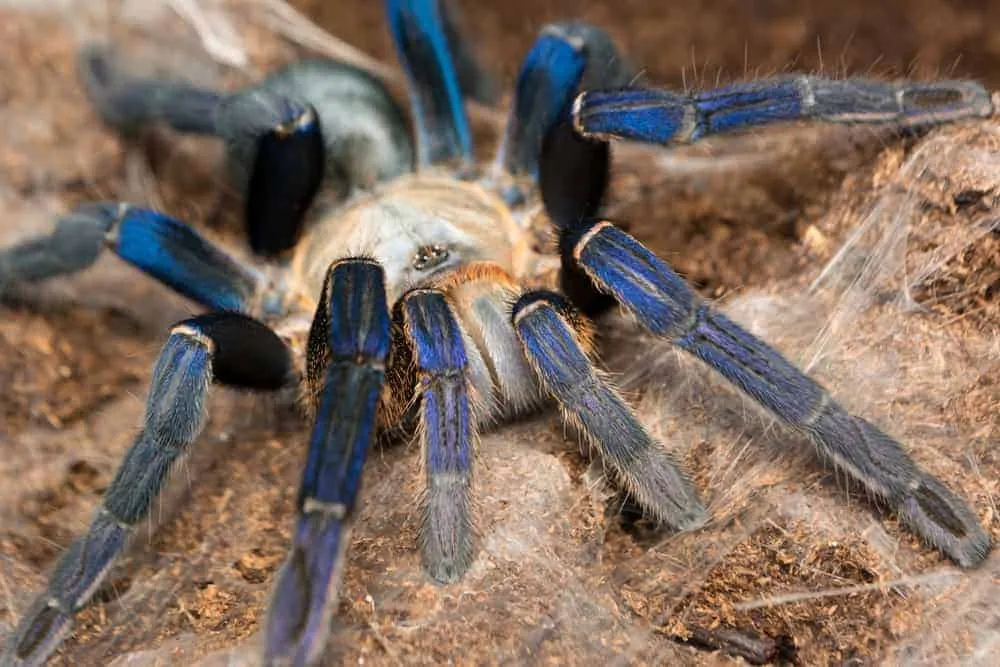The Cobalt Blue Tarantula (Cyriopagopus lividus) is a striking and sought-after species in the tarantula-keeping hobby. Known for its vibrant metallic blue coloration, this tarantula captivates enthusiasts with its beauty and unique characteristics. This article delves into the secrets of this fascinating creature, revealing top facts about its appearance, habitat, diet, behavior, and life cycle. Whether you’re a seasoned arachnid aficionado or a curious beginner, this guide provides comprehensive insights into the world of the Cobalt Blue Tarantula.
Appearance of the Cobalt Blue Tarantula
The Cobalt Blue Tarantula is immediately recognizable due to its stunning blue coloration. This vivid hue is not just a surface pigment; it’s a structural color created by the way light reflects off the microscopic structures in the tarantula’s exoskeleton. The brilliance of the blue can vary based on factors like the tarantula’s age, health, and the lighting conditions. This coloration serves as a warning to potential predators, signaling that the spider is not a desirable meal.
Coloration and Distinct Features
The most notable feature is, of course, the iridescent blue coloration, which is most prominent on the legs and carapace (the upper part of the cephalothorax). The abdomen often appears darker, sometimes with a hint of blue or grey. The spinnerets, which are used to produce silk, and the fangs are typically a contrasting darker shade, often black or brown. The overall appearance is one of striking beauty, making it a favorite among tarantula keepers.
Size and Physical Characteristics
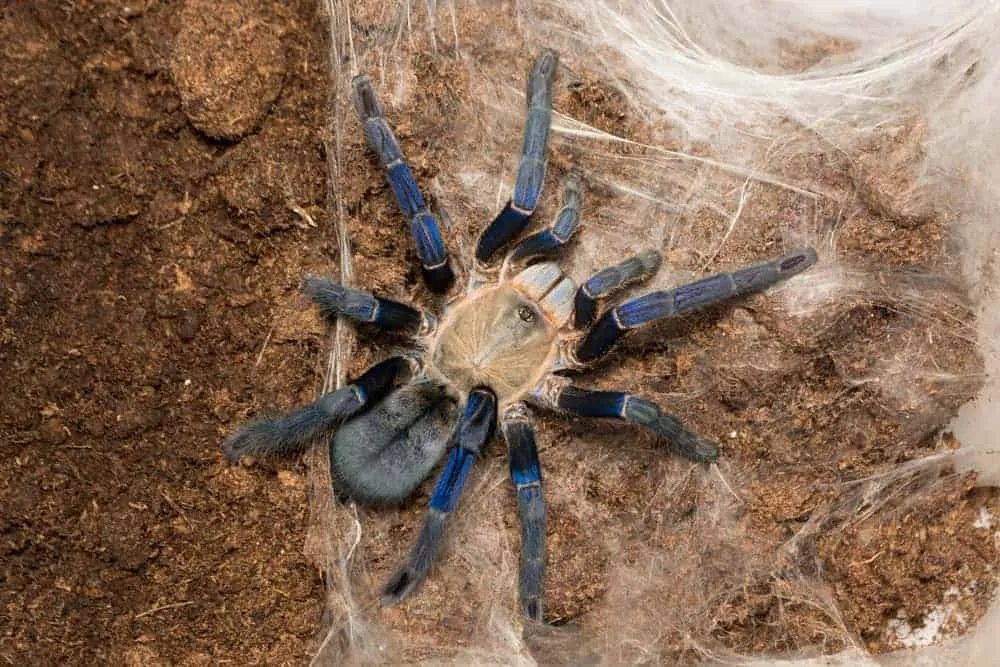
Cobalt Blue Tarantulas are medium-sized tarantulas. They typically reach a leg span of about 5-6 inches. Their bodies are robust, and their legs are strong and powerful, allowing them to move quickly and efficiently. Like all tarantulas, they have two main body sections: the cephalothorax (where the head and thorax are fused) and the abdomen. They have eight eyes, which they use to perceive light and shadow, and chelicerae (fangs) for injecting venom.
Cobalt Blue Tarantula Habitat
Understanding the natural habitat of the Cobalt Blue Tarantula is crucial for providing appropriate care in captivity. Replicating their natural environment as closely as possible ensures the tarantula’s well-being and allows it to thrive. This section explores where these tarantulas originate and how to create an ideal enclosure for them.
Natural Environment and Native Region
Cobalt Blue Tarantulas are native to the tropical forests of Myanmar and Thailand, specifically Southeast Asia. They are terrestrial tarantulas, meaning they spend most of their time on the ground. In their natural habitat, they live in burrows, often found near riverbanks or in areas with high humidity. They seek shelter under logs, rocks, and leaf litter to hide from predators and regulate their body temperature.
Ideal Enclosure Setup for Captivity
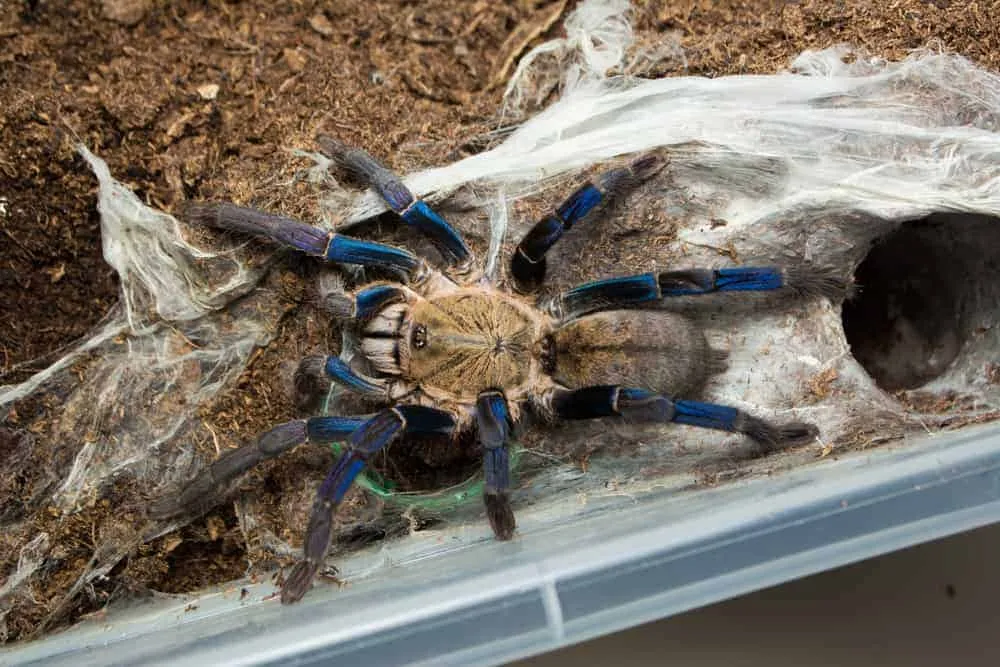
To replicate their natural environment, a suitable enclosure is necessary. A 10-20 gallon terrarium is usually sufficient for an adult Cobalt Blue Tarantula. The enclosure should include a substrate, such as a mixture of coconut fiber, peat moss, and vermiculite, which helps to retain humidity. Provide a hide, such as a cork bark or a hollow log, for the tarantula to retreat into. Maintaining a temperature between 75-85°F (24-29°C) and a humidity level of 70-80% is essential. Regular misting and a water dish are crucial for maintaining the correct humidity levels.
Cobalt Blue Tarantula Diet and Feeding
Proper nutrition is vital for the health and longevity of your Cobalt Blue Tarantula. They are opportunistic predators, meaning they will eat anything that moves and that they can overpower. Understanding their dietary needs and feeding habits ensures they receive the necessary nutrients to grow and thrive.
Appropriate Prey Items and Feeding Frequency
The primary food source for Cobalt Blue Tarantulas in captivity is insects. Crickets, mealworms, and roaches are common choices. The size of the prey should be proportionate to the size of the tarantula; generally, prey should be no larger than the tarantula’s body. Spiderlings and juveniles should be fed more frequently (every 2-3 days), while adults can be fed every 1-2 weeks. Remove any uneaten prey after 24 hours to prevent stress or injury to the tarantula.
Nutritional Needs and Supplementation
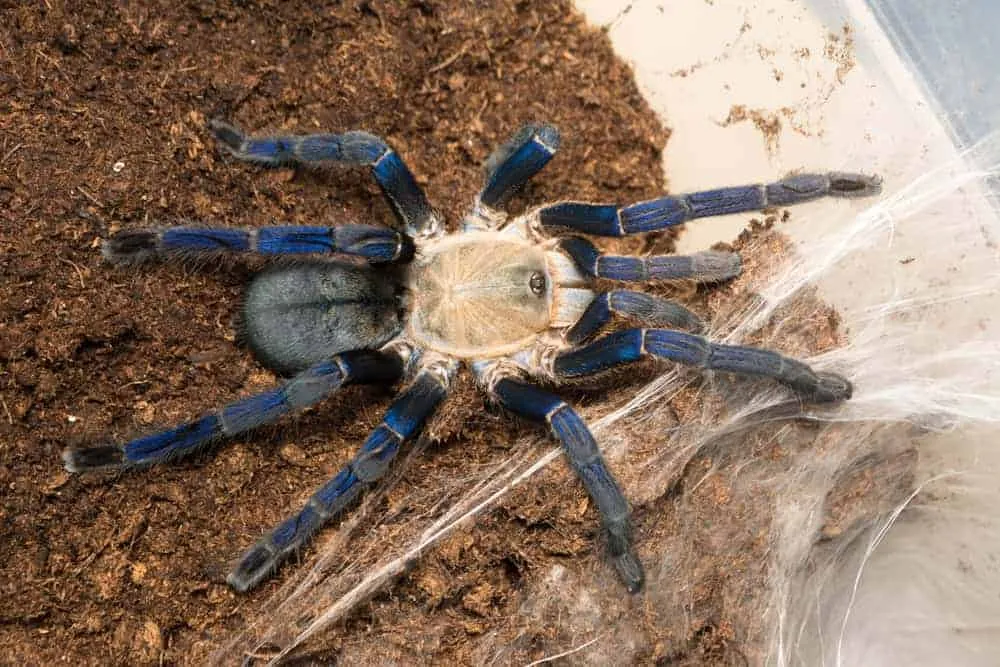
While insects provide essential nutrients, some keepers supplement their tarantulas’ diet. Calcium and vitamin D supplements can be added to the insects before feeding to ensure the tarantula receives adequate nutrients for healthy growth and molting. Hydration is equally important. Always provide a shallow water dish with fresh, clean water for the tarantula to drink from. Be sure to keep the water dish clean to prevent bacterial growth.
Cobalt Blue Tarantula Temperament and Behavior
Cobalt Blue Tarantulas, while beautiful, are known for their defensive behaviors. Understanding their temperament and how they react to different stimuli is essential for safe handling and care. This section explores their typical behaviors and how to manage interactions.
Handling and Interaction Guidelines
Cobalt Blue Tarantulas are generally not recommended for handling, especially for inexperienced keepers. They are fast, skittish, and can bite if they feel threatened. If handling is necessary (e.g., for enclosure maintenance), do so with extreme caution. It’s best to gently coax the tarantula into a container using a soft brush or by gently encouraging it with a piece of cardboard. Always handle them close to the ground to minimize the risk of injury if they fall.
Defensive Behaviors and Venom
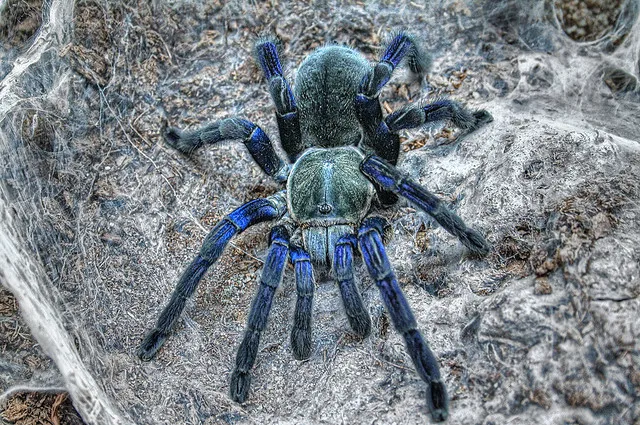
When threatened, Cobalt Blue Tarantulas may display several defensive behaviors, including raising their front legs, rearing up, and sometimes flicking urticating hairs (if present, though this species is not known for heavy urticating hairs) to deter predators. They also possess venom, which is mildly toxic to humans. While a bite is unlikely to be fatal, it can be painful and cause localized symptoms such as swelling, redness, and muscle cramps. Avoid any unnecessary interaction and respect their space to minimize the risk of bites.
Cobalt Blue Tarantula Lifespan and Breeding
Understanding the life cycle of the Cobalt Blue Tarantula, including its lifespan and the process of breeding, provides a comprehensive view of this species. This knowledge helps keepers provide the best possible care and understand the long-term commitment involved.
Average Lifespan in Captivity
The Cobalt Blue Tarantula has a relatively long lifespan compared to some other tarantula species. Females can live for 12-15 years or even longer under optimal conditions. Males, however, have a significantly shorter lifespan, typically only living for 3-5 years after reaching maturity. Factors such as proper care, diet, and environmental conditions greatly influence their lifespan.
Breeding Process and Considerations
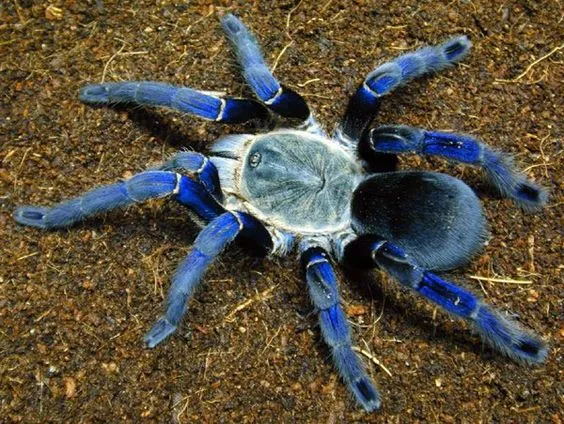
Breeding Cobalt Blue Tarantulas in captivity can be challenging, even for experienced keepers. It typically involves introducing a mature male to a mature female in a controlled environment. The female may be receptive to the male’s advances or may display aggression, potentially leading to the male being eaten. If successful, the female will lay an egg sac containing several hundred spiderlings. Raising the spiderlings requires careful attention to humidity, temperature, and feeding to ensure their survival. Breeding this species is not recommended for beginners due to the complex requirements and potential risks involved.
Cobalt Blue Tarantulas are captivating creatures, each with its unique beauty and fascinating behaviors. By understanding their appearance, habitat, diet, temperament, and life cycle, keepers can provide optimal care and enjoy the privilege of observing these stunning arachnids. Whether you’re a seasoned tarantula enthusiast or a curious beginner, the Cobalt Blue Tarantula offers a rewarding and exciting experience for those who are prepared to meet its specific care needs.
